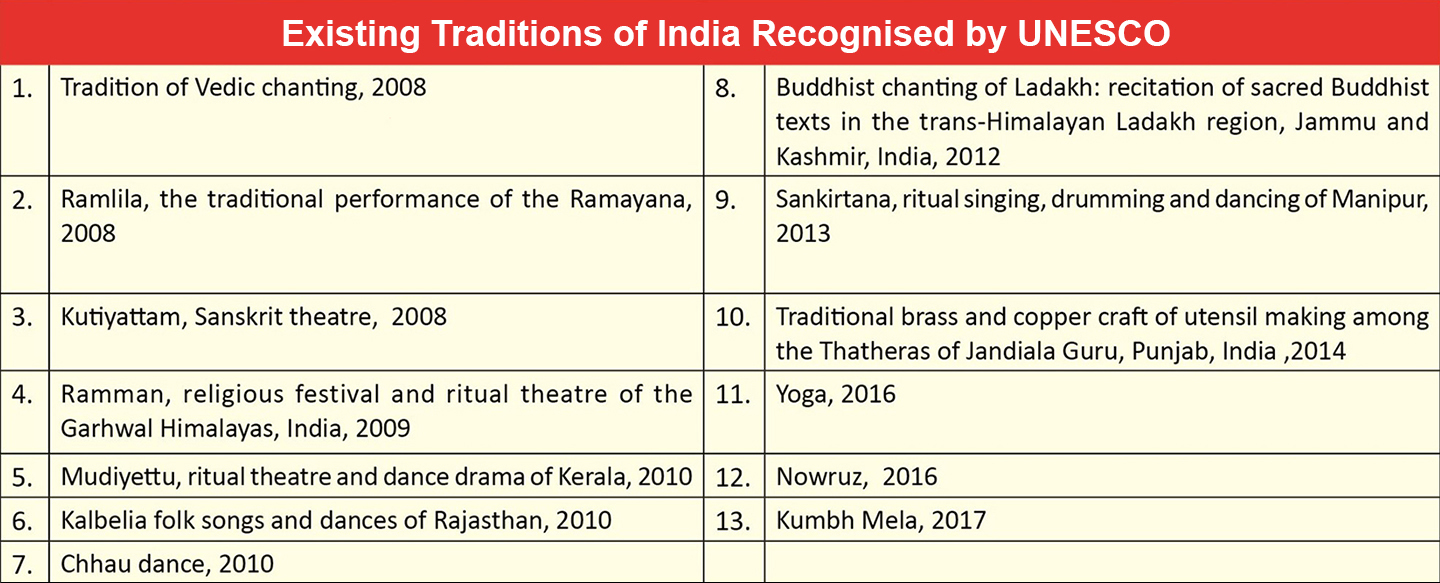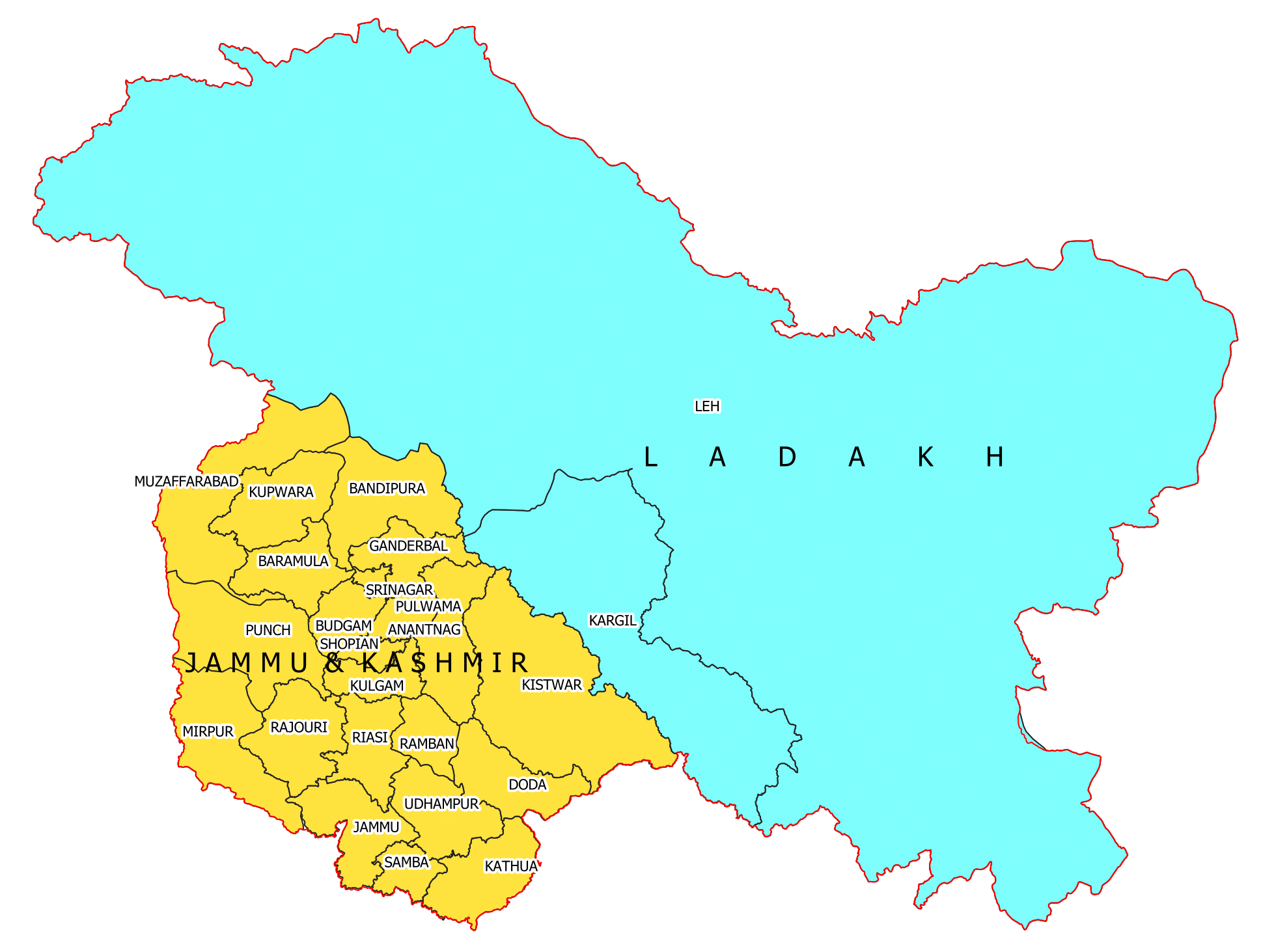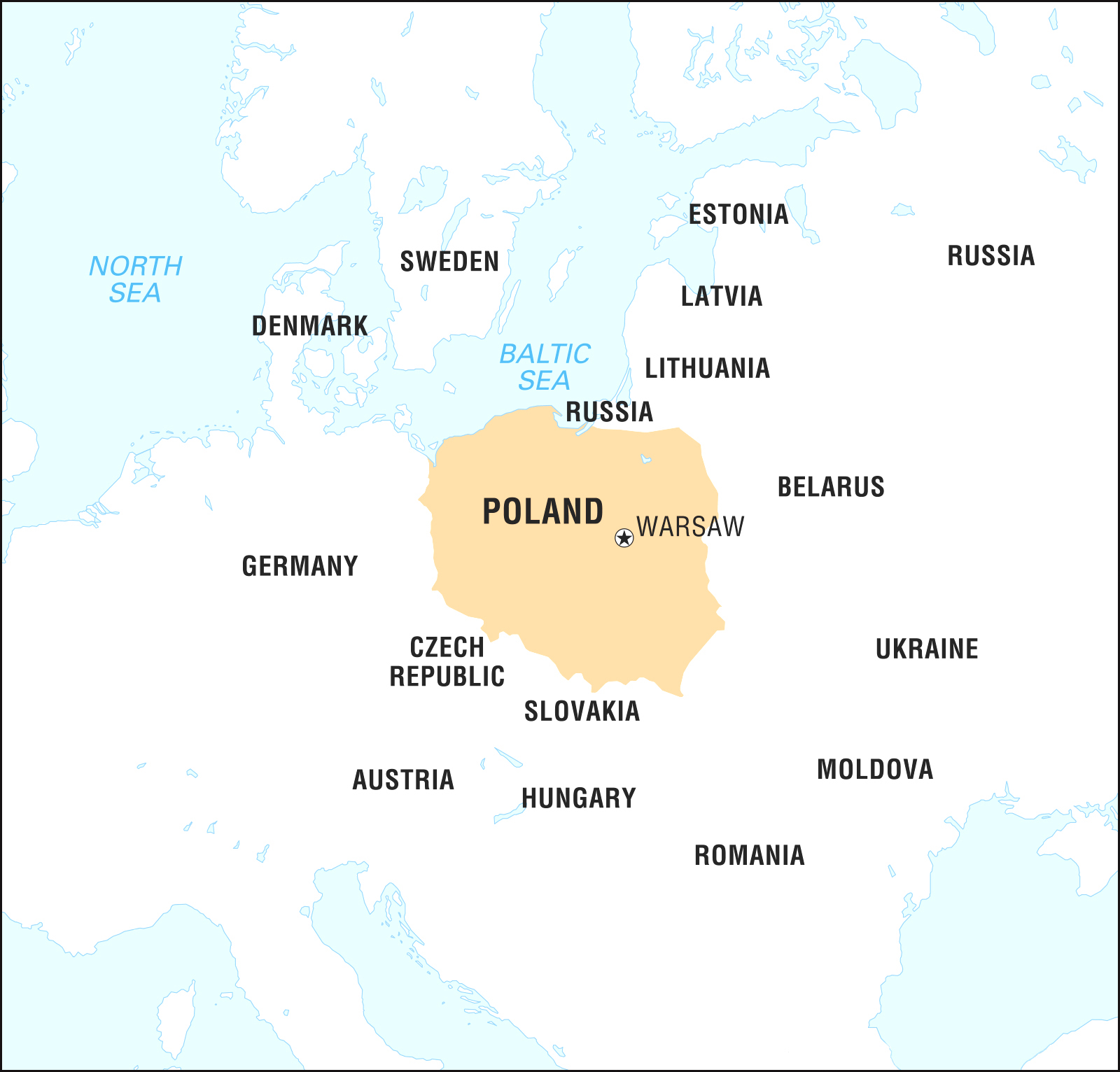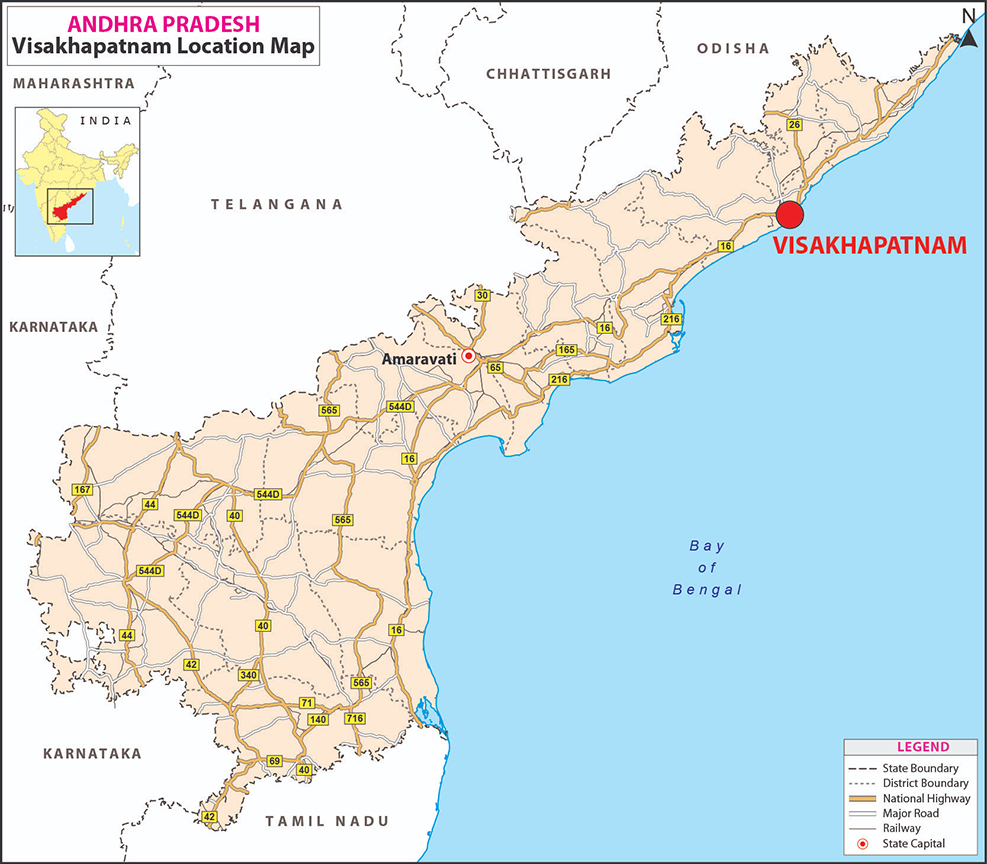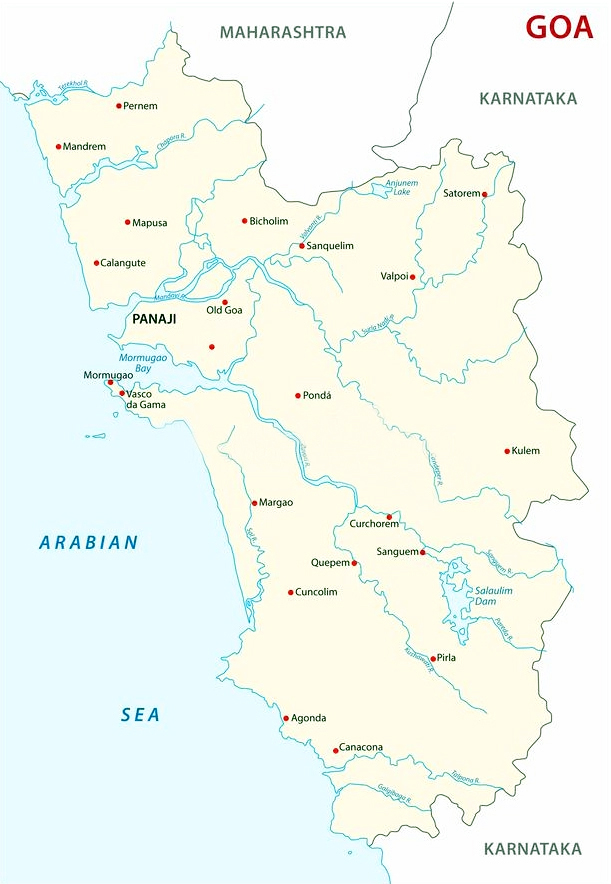Indian Heritage & Culture
Durga Puja on UNESCO’s ICH
For Prelims: UNESCO ICH of Humanity, UNESCO, Man and Biosphere Programme, World Heritage Programme, UNESCO Global Geopark Network, UNESCO's Network of Creative Cities
For Mains: Importance of protecting Cultural Heritage for India, Significance of Intangible Cultural Heritage of Humanity.
Why in News
Recently, Durga Puja in Kolkata has been inscribed on the UNESCO’s Representative List of the Intangible Cultural Heritage (ICH) of Humanity.
- It is the first festival in Asia to achieve recognition as UNESCO ICH of Humanity.
- Earlier, UNESCO announced the Harappan city of Dholavira in Gujarat as India’s 40th world heritage site.
Key Points
- Durga Puja:
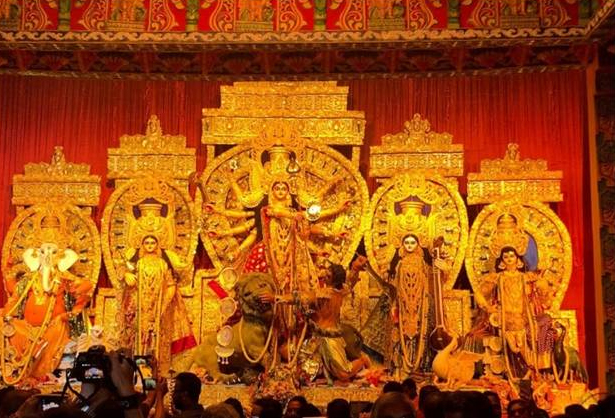
- Durga Puja is a five-day festival which begins on the fifth night of the nine-day Navratri festival and ends on the tenth day, which is Dashami.
- During this time, people collectively worship and invoke Goddess Durga, who is regarded as the feminine energy of the cosmos, also known as ‘Shakti’.
- It is one of the largest cultural carnivals and street art festivals of the country.
- During this time, intricately-designed clay models of the Goddess are worshiped in ‘pandals’ and pavilions where people get together.
- Folk music, culinary, craft, and performing arts traditions are a part of the celebration.
- Though originating in West Bengal, which has the largest Bengali community in the country, the festival is celebrated in many other parts of India, and also the world.
- Significance:
- It acknowledges the festival’s contribution in sustaining and safeguarding a multitude of traditional arts and crafts, well-being and economic empowerment of communities, and energizing creativity.
- Earlier this year (2021), the British Council in India had mapped the creative economy of Durga Puja to over Rs. 32,000 crore for the year 2019 and added that the festival contributes 2.58% of West Bengal’s Gross Domestic Product (GDP).
- It acknowledges the festival’s contribution in sustaining and safeguarding a multitude of traditional arts and crafts, well-being and economic empowerment of communities, and energizing creativity.
- UNESCO’s List of Intangible Cultural Heritage:
- This coveted list is made up of those intangible heritage elements that help demonstrate diversity of cultural heritage and raise awareness about its importance.
- According to UNESCO cultural heritage does not end at monuments and collections of objects.
- It also includes traditions or living expressions inherited from our ancestors and passed on to our descendants, such as oral traditions, performing arts, social practices, rituals, festive events, knowledge and practices concerning nature and the universe or the knowledge and skills to produce traditional crafts.
- The list was established in 2008 when the Convention for Safeguarding of the Intangible Cultural Heritage came into effect.
- The Ministry of Culture (India) has also launched the draft National List of Intangible Cultural Heritage (ICH) of India.
- The National ICH List is an attempt to recognize the diversity of Indian culture embedded in its intangible heritage.
- This initiative is also a part of the Vision 2024 of the Ministry of Culture.
- India is also a signatory of the 2003 UNESCO Convention which aims for the Safeguarding of the Intangible Heritage along with traditions and living expression.
- Inscripted Elements:
- Currently, it has 492 elements from which India now has 14 intangible cultural heritage elements on the prestigious UNESCO Representative List of ICH of Humanity.
- Other than the Durga Puja there are 13 Traditions in India recognised by UNESCO as ICH .
UNESCO
- About:
- UNESCO is the United Nations Educational, Scientific and Cultural Organization. It seeks to build peace through international cooperation in Education, the Sciences and Culture.
- UNESCO's programmes contribute to the achievement of the Sustainable Development Goals defined in Agenda 2030, adopted by the UN General Assembly in 2015.
- It has 193 Members and 11 Associate Members. India joined UNESCO in 1946.
- It is headquartered in Paris, France.
- UNESCO-IOC (Intergovernmental Oceanographic Commission) is leading a global effort to establish ocean-based tsunami warning systems as part of an overall multi-hazard disaster reduction strategy.
- Last year (2020), UNESCO-IOC approved the recognition of two communities of Odisha viz., Venkatraipur and Noliasahi as Tsunami Ready Communities.
- Other Initiatives of UNESCO


Indian Polity
Demand for Including Ladakh under Sixth Schedule
For Prelims: Parliament, Union Territory (UT) of Ladakh , Sixth Schedule of the Constitution, Autonomous District Councils (ADCs), National Commission for Scheduled Tribes (NCST)
For Mains: Significance of Sixth Schedule of the Indian Constitution, Demand of inclusion of Union Territory (UT) of Ladakh in the Sixth Schedule of the Indian Constitution impediments in the way of inclusion.
Why in News
Recently, a demand has been raised in Parliament to include the Union Territory (UT) of Ladakh in the Sixth Schedule of the Constitution to safeguard land, employment, and cultural identity of the local population.
- The Jammu and Kashmir Reorganisation Act, 2019 was introduced to bifurcate the State into two separate union territories of Jammu and Kashmir (with legislature), and Ladakh (without legislature).
Key Points
- Need of Inclusion in Sixth Schedule:
- The administration of the UT of Ladakh region is now completely in the hands of bureaucrats. The government now looks even more distant than Srinagar.
- The changed domicile policy in Jammu and Kashmir has raised fears in the region about its own land, employment, demography, and cultural identity.
- The UT has two Hill councils in Leh and Kargil, but neither is under the Sixth Schedule.
- Their powers are limited to collection of some local taxes such as parking fees and allotment and use of land vested by the Centre.
- NCST Recommendation:
- The National Commission for Scheduled Tribes (NCST) has recommended that the Union Territory (UT) of Ladakh be included in the Sixth Schedule of the Constitution.
- NCST, a constitutional body to safeguard socio-cultural rights of Scheduled Tribes, was entrusted with the responsibility of examining the status of tribals in Ladakh, by the Centre.
- If included, Ladakh will be the only UT in the Sixth Schedule. Also, bestowing such a status to Ladakh would require a constitutional amendment.
- Reasons Behind the Recommendation
- It is estimated that more than 90% of Ladakh’s population is tribal. The primary Scheduled Tribes (STs) in Ladakh are Balti Beda, Bot (or Boto), Brokpa (or Drokpa, Dard, Shin), Changpa, Garra, Mon and Purigpa.
- The Ladakh region has several distinct cultural heritages by communities such as Drokpa, Balti and Changpa, among others, which needs to be preserved and promoted.
- Prior to the creation of the Union Territory of Ladakh, people in Ladakh region had certain agrarian rights including right on land which restricted people from other parts of the country to purchase or acquire land in Ladakh.
- Inclusion in the sixth schedule will help in democratic devolution of powers in the region and will also enhance the transfer of funds for speedy development of the region.
- The National Commission for Scheduled Tribes (NCST) has recommended that the Union Territory (UT) of Ladakh be included in the Sixth Schedule of the Constitution.
- Difficulty Behind Ladakh’s Inclusion:
- Ladakh’s inclusion in the Sixth Schedule would be difficult. The Constitution is very clear, the Sixth Schedule is for the Northeast.
- For tribal areas in the rest of the country, there is the Fifth Schedule.
- Notably, no region outside the Northeast has been included in the Sixth Schedule.
- In fact, even in Manipur, which has predominantly tribal populations in some places, the autonomous councils are not included in the Sixth Schedule.
- Nagaland and Arunachal Pradesh, which are totally tribal, are also not in the Sixth Schedule.
- However, it remains the prerogative of the government, it can, if it so decides, bring a Bill to amend the Constitution for this purpose.
- Ladakh’s inclusion in the Sixth Schedule would be difficult. The Constitution is very clear, the Sixth Schedule is for the Northeast.
Sixth Schedule
- Article 244: The Sixth Schedule under Article 244 provides for the formation of autonomous administrative divisions — Autonomous District Councils (ADCs) — that have some legislative, judicial, and administrative autonomy within a state.
- The Sixth Schedule contains special provisions for the administration of tribal areas in the four north-eastern states of Assam, Meghalaya, Tripura and Mizoram.
- Autonomous Districts: The tribal areas in these four states have been constituted as autonomous districts. The governor is empowered to organise and re-organise the autonomous districts.
- The acts of Parliament or the state legislature do not apply to autonomous districts or apply with specified modifications and exceptions.
- The power of direction, in this regard, lies either with the President or Governor.
- District Council: Each autonomous district has a district council consisting of 30 members, of whom four are nominated by the Governor and the remaining 26 are elected on the basis of adult franchise.
- The elected members hold office for a term of five years (unless the council is dissolved earlier) and nominated members hold office during the pleasure of the governor.
- Each autonomous region also has a separate regional council.
- Powers of the Council: The district and regional councils administer the areas under their jurisdiction.
- They can make laws on certain specified matters like land, forests, canal water, shifting cultivation, village administration, the inheritance of property, marriage and divorce, social customs and so on. But all such laws require the assent of the Governor.
- They can constitute village councils or courts for trial of suits and cases between the tribes. They hear appeals from them. The jurisdiction of the high court over these suits and cases is specified by the governor.
- The district council can establish, construct or manage primary schools, dispensaries, markets, ferries, fisheries, roads and so on in the district.
- They are empowered to assess and collect land revenue and to impose certain specified taxes.
International Relations
Mutual Legal Assistance Treaty: India- Poland
For Prelims: Mutual Legal Assistance Treaties (MLATs), Nodal Agency in India for MLATs and its legal basis, Location of Poland
For Mains: The utility of Mutual Legal Assistance Treaties (MLATs) in dealing with Transnational Crime and Terrorism, Significance of India-Poland relations.
Why in News
Recently, the Union Cabinet has approved the Treaty on Mutual Legal Assistance in Criminal Matters between the Government of India and Poland.
Key Points
- About:
- Mutual Legal Assistance Treaties (MLATs):
- The MLATs in criminal matters are the bilateral treaties entered between the countries for providing international cooperation and assistance.
- These agreements allow for the exchange of evidence and information in criminal and related matters between the signing countries.
- Benefits of Treaty:
- Investigation and Prosecution of Crime: It will enhance effectiveness of both the countries in investigation and prosecution of crime, through cooperation and mutual legal assistance in criminal matters.
- Transnational Crime and its Linkages to Terrorism: It will provide a broad legal framework for bilateral cooperation with Poland in investigation and prosecution of crime as well as in tracing, restrain and confiscation of proceeds and instruments of crime as well as the funds meant to finance terrorist acts.
- Gaining Better Inputs: It will be instrumental in gaining better inputs and insights in the modus operandi of organized criminals and terrorists.
- These in turn can be used to fine tune policy decisions in the field of internal security.
- Nodal Agency in India:
- The Ministry of Home Affairs is the nodal Ministry and the Central authority for seeking and providing mutual legal assistance in criminal law matters.
- The Ministry of External Affairs may be involved in this process when such requests are routed through diplomatic channels by these Ministries.
- Legal Basis:
- Section 105 of the Criminal Procedure Code (CrPC) speaks of reciprocal arrangements to be made by the Central Government with the Foreign Governments with regard to the service of summons/warrants/judicial processes.
- India has entered into Mutual Legal Assistance Treaties/Agreements with 42 countries (November 2019).
- Mutual Legal Assistance Treaties (MLATs):
India-Poland Relations
- Historical Background:
- India and Poland diplomatic relations were established in 1954, leading to the opening of the Indian Embassy in Warsaw in 1957.
- The two countries shared common ideological perceptions, based on their opposition to colonialism, imperialism and racism.
- During the Communist era of Poland (1944 to 1989), bilateral relations were close and cordial, with regular high level visits, coupled with planned trade and economic interactions by state trading organizations, underpinned by the rupee clearing arrangements.
- The relationship continued to remain close after Poland chose the democratic path in 1989.
- A cordial political relationship has emerged in the current century, particularly after Poland joined the European Union in 2004, and became one of India’s key economic partners in Central Europe.
- Economic & Commercial Relations:
- Export:
- Poland is India’s largest trade partner and export destination in the Central European region, with bilateral trade growing almost seven-fold over the last ten years.
- As per Indian statistics, the overall value of bilateral trade in 2019 was USD 2.36 billion.
- Investment:
- Indian investments in Poland are valued at over USD 3 billion .
- Total Polish investment in India is estimated at USD 672 million.
- Foreign Direct Investment (FDI):
- From April 2000 to March 2019, India recorded over USD 672 million of FDI from Poland, 0.16%of its total FDI inflows in that period.
- Export:
- Cultural and Educational Relations:
- There is a strong tradition of Indology studies in Poland, with Polish scholars having translated Sanskrit into Polish as early as in the 19th Century.
- Indology is the academic study of the history and cultures, languages, and literature of India and as such is a subset of Asian studies.
- The Polish Mission organised the 150th anniversary of Mahatma Gandhi in 2019.
- Polish Post (Poczta Polska ) issued a Commemorative Stamp on the 150th Birth Anniversary of Mahatma Gandhi which was released on the occasion.
- On the occasion of 550th Prakash Purab of Guru Nanak Dev ji, Mission and Gurudwara Sahib of Poland jointly organised functions at Gurudwara Sahib, Poland.
- The first International Day of Yoga was organized in 21 cities in Poland on June 21, 2015. An estimated 11000 people participated in public events.
- There is a strong tradition of Indology studies in Poland, with Polish scholars having translated Sanskrit into Polish as early as in the 19th Century.
- Indian Community:
- Estimated at approximately 10,000, the Indian community in Poland consists of traders (textiles, garments and electronics) who came after the collapse of communism, and professionals with multinational or Indian companies and software/IT experts, including a rising number of Indian students.
Way Forward
- Poland was acclaimed one of 50 most innovative countries by Bloomberg in 2017 and it is important that India continues to see it as the technology hub in Central Europe and the friendly place to do business.
- Poland has a lot to offer in terms of green technologies, smart cities, cybersecurity, fintech and water management.
- Poland also offers excellent opportunities to Indian investors and exporters in the automotive sector. Given Poland’s strategic location, shortages in healthcare personnel and 25% growth in the pharma market in the last 5 years, there are good opportunities for Indian exporters and investors.
- The relationship between India and Poland has always been very good. But trade between us has suffered due to Covid.
- A new factor that has strengthened ties between the two countries is the increasing Indian diaspora in Poland, including about 6,000 students.
- Poland has become more attractive for students ever since it introduced English as a medium of instruction in medicine and engineering at major universities
- Before Covid, there used to be a direct flight to Warsaw from Delhi. The restoration of direct flight will enhance trade relations between two countries.


Biodiversity & Environment
Draft Resolution on Climate Change: U.N.
For Prelims: United Nations Security Council (UNSC) draft resolution, United Nations Framework Convention on Climate Change (UNFCCC), COP26, net zero, CDRI, Kyoto Protocol, ISA
For Mains: Importance of the U.N. Draft Resolution on Climate Change, India’s response on it and initiatives taken so far by India to tackle the impact of climate change.
Why in News
Recently, India and Russia opposed a United Nations Security Council (UNSC) draft resolution on climate change.
- The resolution was co-sponsored by Ireland and Niger and it was first proposed by Germany in the UNSC in 2020.
- It was supported by 113 UN member countries (of a total of 193), which includes 12 of the 15 UNSC members.
Key Points
- About:
- The draft resolution sought to create a formal space in the Security Council for discussions on climate change and its implications on international security.
- It also asked that the UN Secretary-General provide periodic reports on how risks from climate change can be addressed to prevent conflicts.
- It also asked the Secretary General to appoint a special envoy for climate security.
- Further, it asked UN field missions to regularly report on climate change assessments in their areas of operation and take the help of climate experts in carrying out their routine functions.
- Need:
- It has been argued that climate change had an international security dimension.
- Climate change-induced food or water shortage, loss of habitat or livelihood, or migration can exacerbate existing conflicts or even create new ones.
- This can have implications for the UN field missions that are deployed across the world in peacekeeping efforts.
- Criticism:
- Shift from UNFCCC:
- India said that it was an attempt to shift climate talks from the United Nations Framework Convention on Climate Change (UNFCCC) to the Security Council and a “step backward” for collective action on the issue.
- At the annual climate change conference also, India had forced a last-minute amendment in the final draft agreement to ensure that a provision calling for “phase-out” of coal was changed to “phase-down”.
- The draft resolution, as per India, would undermine the progress made in the right direction.
- India said that it was an attempt to shift climate talks from the United Nations Framework Convention on Climate Change (UNFCCC) to the Security Council and a “step backward” for collective action on the issue.
- Shift from UNFCCC:
UN Framework Convention on Climate Change
- It discusses all matters related to climate change.
- The parties to the UNFCCC — over 190 countries — meet several times every year, including at a two-week year-ending conference like the one at Glasgow, to work on a global approach to combat climate change.
- It is this process that has given rise to the Paris Agreement, and its predecessor the Kyoto Protocol, the international instrument that is designed to respond to the climate change crisis.
- UNSC does not have Expertise:
- It has been argued that the UNFCCC must remain the appropriate forum for addressing all climate change-related issues, and claimed the Security Council does not have the expertise to do so.
- Hegemony over Climate Action:
- Unlike UNFCCC, where decisions are taken by consensus of all the 190-plus countries, the UNSC would enable climate change decision-making by a handful of developed countries.
- The UNSC members are “major contributors to climate change due to historic emissions
- Also, the decision of bringing the issue to the security council was made without the involvement of most developing countries and without recognising consensus.
- Unlike UNFCCC, where decisions are taken by consensus of all the 190-plus countries, the UNSC would enable climate change decision-making by a handful of developed countries.
- Recent Climate Related Measures by India:
- An ambitious climate action vision with five elements has been unveiled at COP26.
- Taking non-fossil energy capacity to 500 GW by 2030
- Meeting 50% of energy requirements from renewable energy by 2030
- Reducing total projected carbon emissions by one billion tons by 2030
- Reducing the carbon intensity of the economy to less than 45% by 2030
- Achieving the target of “net zero” by 2070.
- India now ranks fourth in terms of installed renewable energy capacity and non-fossil energy has increased by more than 25% in the past seven years and reached 40% of the total energy mix.
- India has also taken the lead in initiatives such as the International Solar Alliance (ISA) and Coalition for Disaster Resilient Infrastructure (CDRI).
- An ambitious climate action vision with five elements has been unveiled at COP26.
United Nation Security Council
- The UNs Charter established six main organs of the United Nations, including the United Nations Security Council (UNSC). Article 23 of the UN Charter concerns the composition of the UNSC.
- The UNSC has been given primary responsibility for maintaining international peace and security to the Security Council, which may meet whenever peace is threatened.
- While other organs of the United Nations make recommendations to member states, only the Security Council has the power to make decisions that member states are then obligated to implement under the Charter.
- Permanent and Non-Permanent Members: The UNSC is composed of 15 members, 5 permanent and 10 non-permanent.
- Five permanent members: China, France, the Russian Federation, the United Kingdom, and the United States.
- Ten non-permanent members: Elected for two-year terms by the General Assembly.
- Each year, the General Assembly elects five non-permanent members (out of ten in total) for a two-year term. The ten non-permanent seats are distributed on a regional basis.
- As stipulated in rule 144 of the rules of procedure, a retiring member is not eligible for immediate re-election.
- In accordance with rule 92 of the rules of procedure, the election is held by secret ballot and there are no nominations. Under rule 83 of the rules of procedure, the non-permanent members of the Security Council are elected by a two-thirds majority.
- Five for African and Asian countries.
- One for Eastern European countries.
- Two for Latin American and Caribbean countries.
- Two for Western European and other countries.
- India has been advocating a permanent seat in UNSC.
- India has the following objective criteria, such as population, territorial size, Gross Domestic Product, economic potential, civilisational legacy, cultural diversity, political system and past and ongoing contributions to UN activities especially to UN peacekeeping operations.
Governance
First Green Hydrogen Microgrid Project: Andhra Pradesh
For Prelims: Green Hydrogen Microgrid Project, Decarbonizing,Forms of Hydrogen, NTPC
For Mains: Green Hydrogen and its significance in achieving India’s target of becoming carbon neutral by 2070
Why in News
Recently, National Thermal Power Corporation Ltd has awarded the country’s first green hydrogen microgrid project at its Simhadri (near Visakhapatnam) plant in Andhra Pradesh.
Key Points
- About:
- This unique project configuration is designed in-house by NTPC. It would be a precursor to large-scale hydrogen energy storage projects. It is in line with India’s vision to become carbon neutral by 2070.
- The hydrogen would be produced using the advanced 240 kW Solid Oxide Electrolyser by taking input power from the nearby Floating Solar project.
- Earlier, NTPC had commissioned the development of India’s biggest floating solar plant in Telangana’s Ramagundam.
- The hydrogen produced during the day will then be stored at high pressure and would be electrified using a 50 kW Solid Oxide Fuel Cell.
- A solid oxide fuel cell (or SOFC) is an electrochemical conversion device that produces electricity directly from oxidizing a fuel.
- Significance:
- Helpful in Deploying Multiple Microgrids:
- The project will be useful for further studying and deploying multiple microgrids in various off-grid and strategic locations of the country.
- Clean energy development is an important weapon against climate change and limiting its devastating effects.
- The project will be useful for further studying and deploying multiple microgrids in various off-grid and strategic locations of the country.
- Open Prospects for Decarbonizing:
- It will open prospects for decarbonizing the far-off regions of the country such as Ladakh, J&K, etc., which are dependent on diesel generators.
- Decarbonizing means removing or reducing the amount of gaseous carbon compounds released in the environment.
- NTPC Renewable Energy Limited (NTPC REL) has also inked a pact with the Union territory of Ladakh for a green hydrogen mobility project.
- It will open prospects for decarbonizing the far-off regions of the country such as Ladakh, J&K, etc., which are dependent on diesel generators.
- Energy Security:
- Hydrogen fuel can be a game-changer for the energy security of India, which imports 85% of its oil and 53% of gas requirements.
- To promote clean fuels, India is considering making it mandatory for fertilizer plants and oil refineries to purchase green hydrogen.
- NTPC is also looking to leverage hydrogen for transportation by mixing the fuel with natural gas for the City Gas Distribution (CGD) network.
- Helpful in Deploying Multiple Microgrids:
- Related Initiatives:
- The country’s first experiment of a hydrogen-fuel cell technology-based train by retrofitting an existing diesel engine has been announced by Indian Railways.
- National Hydrogen Energy Mission (NHM):
- The Union Budget (2021-22) has announced the mission for using hydrogen as an energy source.
- Intended Nationally Determined Contributions (INDCs) target: It targets installing 100 GW grid-connected solar power plants by the year 2022.
- National Action Plan on Climate Change
- International Solar Alliance (ISA)
Green Hydrogen
- It is produced by splitting water into hydrogen and oxygen using an electrolyzer powered by renewable energy sources such as wind and solar.
- The fuel can be a game-changer for the energy security of India, which imports 85% of its oil and 53% of gas requirements.
- To promote clean fuels, India is considering making it mandatory for fertilizer plants and oil refineries to purchase green hydrogen.
Other Forms of Hydrogen
- Brown hydrogen:
- It is produced using coal where the emissions are released to the air.
- Grey hydrogen:
- It is produced from natural gas where the associated emissions are released to the air.
- Blue hydrogen:
- It is produced from natural gas, where the emissions are captured using carbon capture and storage.
National Thermal Power Corporation Limited
- NTPC Ltd. is a central Public Sector Undertaking (PSU) under the Ministry of Power.
- It is India’s largest energy conglomerate with roots planted way back in 1975 to accelerate power development in India.
- It aims to provide reliable power and related solutions in an economical, efficient and environment-friendly manner, driven by innovation and agility.
- It has a 67,907-MW installed capacity comprising 47 NTPC stations and 26 joint and 26 joint venture stations.
- It has been pushing towards green energy and green hydrogen projects to reduce carbon footprints. It has recently revised its target of achieving 60GW renewables capacity by 2032.
- It became a Maharatna company in May 2010.
- It is located in New Delhi.


Important Facts For Prelims
Sardar Vallabh Bhai Patel
Why in News
Recently, the Prime Minister paid tribute to India's first home minister, Sardar Vallabhbhai Patel, on his 71st death anniversary on 15th December.
Key Points
- Born:
- 31st October 1875 in Nadiad, Gujarat.
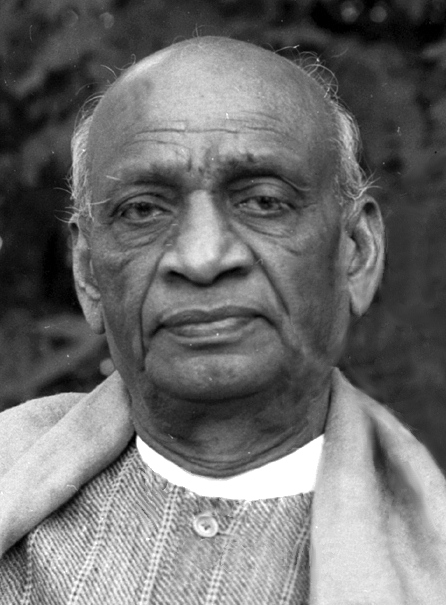
- First Home Minister and Deputy Prime Minister of India.
- He always requested the people of India to live together by uniting (Ek Bharat) in order to create a foremost India (Shresth Bharat).
- This ideology still reflects in the Atmanirbhar Bharat initiative which seeks to make India Self-Reliant.
- 31st October 1875 in Nadiad, Gujarat.
- Headed various Committees of the Constituent Assembly of India, namely:
- Advisory Committee on Fundamental Rights.
- Committee on Minorities and Tribal and Excluded Areas.
- Provincial Constitution Committee.
- Reforms:
- He worked extensively against alcohol consumption, untouchability, caste discrimination and for women emancipation in Gujarat and outside.
- Integrated the farmer’s cause in Kheda Satyagraha (1918) and Bardoli Satyagraha (1928) with the national freedom movement.
- Women of Bardoli bestowed the title ‘Sardar’ on Vallabhbhai Patel, which means ‘a Chief or a Leader’.
- Remembered as the ‘Patron Saint of India’s Civil Servants’ as he established the modern all-India services system.
- Integration of the Princely States:
- As India’s first Home Minister and Deputy Prime Minister, Sardar Patel played a key role in the integration of about 565 princely states into the Indian Union.
- Few princely states like Travancore, Hyderabad, Junagadh, Bhopal and Kashmir were averse to joining the state of India.
- Sardar Patel worked tirelessly to build a consensus with the princely states but did not hesitate in employing methods of Sama, Dama, Dand and Bhed wherever necessary.
- He had used force to annex princely states of Junagadh ruled by Nawab and Hyderabad ruled by Nizam, both of whom had wished not to merge their respective states with the Union of India.
- Sardar Vallabhbhai Patel stitched the princely states along with British Indian territory and prevented the balkanization of India.
- Known as the “Iron Man of India” for playing an important role in unification and integration of Indian princely states into the Indian federation and for convincing princely states to align with the Indian Union.
- Death:
- 15th December 1950 in Bombay.
Statue of Unity
- The Statue of Unity is built in honor of Sardar Vallabhbhai Patel.
- It was inaugurated on 31st October, 2018 to mark the 143rd birth anniversary of Sardar Patel.
- The Statue of Unity is the tallest statue in the world. At 182 meters, it is 23 meters taller than China's Spring Temple Buddha statue and almost double the height of the Statue of Liberty (93 meters tall) in the US.
- In January 2020, it was added to the ‘Eight Wonders’ of the Shanghai Cooperation Organization (SCO).
Important Facts For Prelims
Goa Liberation Day
Why in News
Recently, the Indian Navy conducted a Seminar to commemorate the Diamond Jubilee (50 Years) of the liberation of Goa. Goa Liberation Day is celebrated on 19th December every year.
Key Points
- The day marks the occasion when the Indian armed forces freed Goa in 1961 from 450 years of Portuguese rule.
- The Portuguese colonized several parts of India in 1510 but by the end of the 19th-century Portuguese colonies in India were limited to Goa, Daman, Diu, Dadra, Nagar Haveli and Anjediva Island (a part of Goa).
- As India gained independence on 15th August, 1947, it requested the Portuguese to cede their territories but they refused.
- The Goa liberation movement started off with small scale revolts, but reached its peak between 1940 to 1960.
- In 1961, after the failure of diplomatic efforts with the Portuguese, the Indian Government launched Operation Vijay and annexed Daman and Diu and Goa with the Indian mainland on 19th December.
- On 30th May 1987, the territory was split and Goa was formed. Daman and Diu remained a Union Territory.
- Hence, 30th May is celebrated as the Statehood Day of Goa.
Goa
- Location: It is located on the southwestern coast of India within the region known as the Konkan, and geographically separated from the Deccan highlands by the Western Ghats.
- Capital: Panji.
- Official Language: Konkani.
- Konkani is one of the 22 languages from the Eight Schedule.
- It was added in the list along with Manipuri and Nepali by the 71st Amendment Act of 1992.
- Borders: It is surrounded by Maharashtra to the north and Karnataka to the east and south, with the Arabian Sea forming its western coast.
- Geography:
- The highest point of Goa is Sonsogor.
- Goa's seven major rivers are the Zuari, Mandovi (also called Mhadei), Terekhol, Chapora, Galgibag, Kumbarjua canal, Talpona and the Sal.
- Most of Goa's soil cover is made up of laterites.
- Wildlife Sanctuaries and National Parks:
- Dr Salim Ali Bird Sanctuary
- Mhadei Wildlife Sanctuary
- Netravali Wildlife Sanctuary
- Cotigao Wildlife Sanctuary
- Bhagwan Mahaveer Sanctuary
- Mollem National Park


Important Facts For Prelims
Atmanirbhar Bharat Rojgar Yojana
Why in News
Maharashtra has topped the list of states with maximum number of beneficiaries under the Atmanirbhar Bharat Rojgar Yojana (ABRY), followed by Tamil Nadu and Gujarat.
Key Points
- About:
- It was launched in November 2020 to boost employment in the formal sector and incentivize creation of new employment opportunities during the Covid-19 recovery phase under Atmanirbhar Bharat Package 3.0.
- Government Contribution:
- It provides subsidy for provident fund contribution for adding new employees to establishments registered with the Employees’ Provident Fund Organization (EPFO).
- The organizations of up to 1000 employees would receive employee’s contribution (12% of wages) & employer’s contributions (12% of wages), totalling 24% of wages, for two years.
- Employers with over 1,000 employees will get employees’ contribution of 12%, for two years.
- The subsidy amount under the scheme will be credited upfront only in Aadhaar-seeded EPFO accounts (UAN) of new employees.
- Eligibility Criteria for Establishments:
- Establishments registered with EPFO will be eligible for the benefits if they add new employees compared to the reference base of employees as in September 2020.
- Establishments, with up to 50 employees, would have to add a minimum of two new employees.
- The organizations, with more than 50 employees, would have to add at least five employees.
- Target Beneficiaries:
- Any new employee joining employment in EPFO registered establishments on monthly wages less than Rs. 15,000.
- Those who left their job between 1st March to 30th September 2020 and are employed on or after 1st October 2020.
Other Employment Related Initiatives
- Pradhan Mantri Garib Kalyan Ann Yojana
- Mahatma Gandhi National Rural Employment Guarantee Scheme
- Pt. Deen Dayal Upadhyaya Grameen Kaushalya Yojana (DDU-GKY)
- Deendayal Antyodaya Yojana-National Urban Livelihoods Mission
- The Atma Nirbhar Bharat Rojgar Yojana as part of Atma Nirbhar Bharat package 3.0
- Emergency Credit Line Guarantee Scheme (ECLGS)

